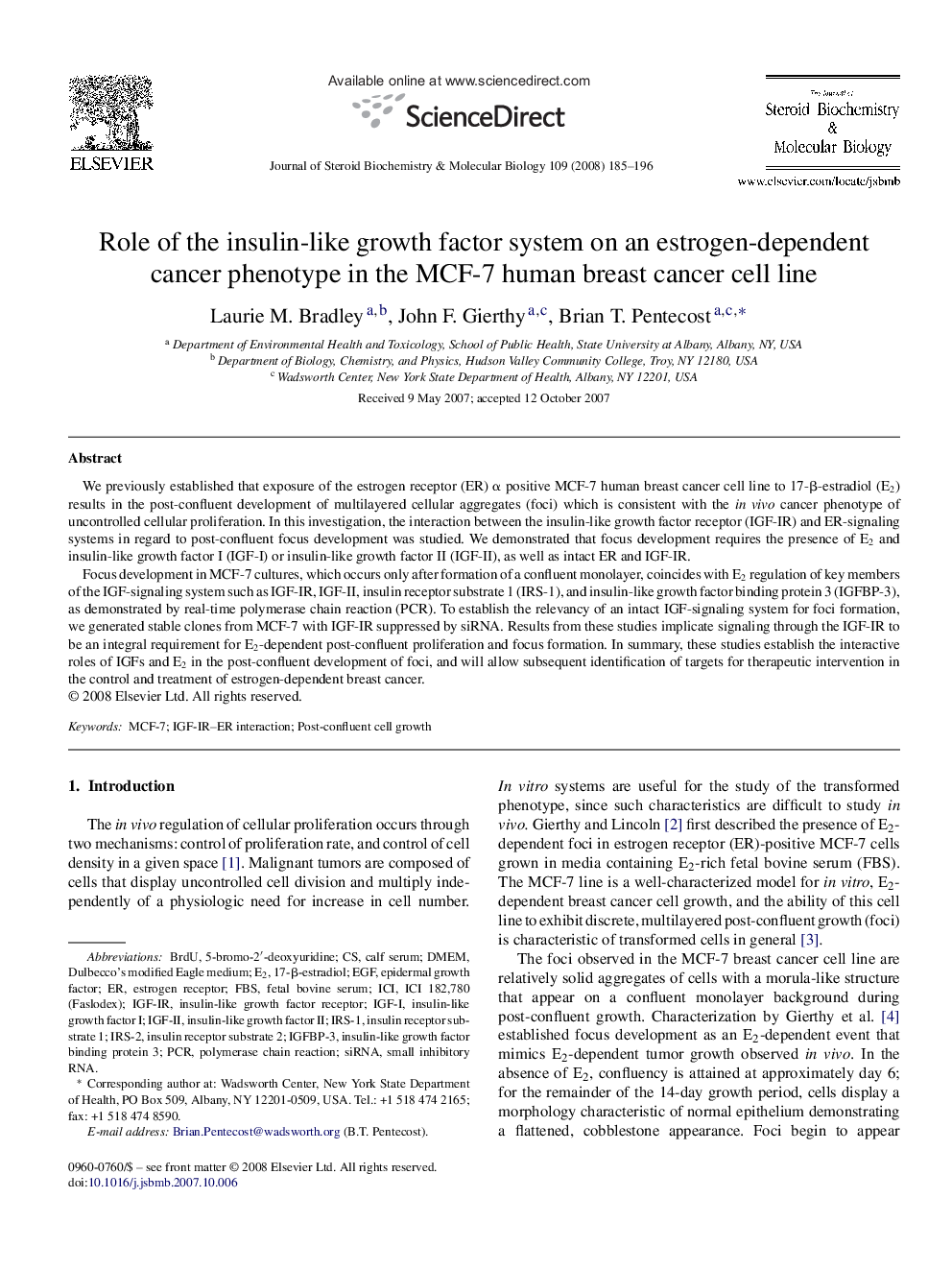| Article ID | Journal | Published Year | Pages | File Type |
|---|---|---|---|---|
| 1992946 | The Journal of Steroid Biochemistry and Molecular Biology | 2008 | 12 Pages |
We previously established that exposure of the estrogen receptor (ER) α positive MCF-7 human breast cancer cell line to 17-β-estradiol (E2) results in the post-confluent development of multilayered cellular aggregates (foci) which is consistent with the in vivo cancer phenotype of uncontrolled cellular proliferation. In this investigation, the interaction between the insulin-like growth factor receptor (IGF-IR) and ER-signaling systems in regard to post-confluent focus development was studied. We demonstrated that focus development requires the presence of E2 and insulin-like growth factor I (IGF-I) or insulin-like growth factor II (IGF-II), as well as intact ER and IGF-IR.Focus development in MCF-7 cultures, which occurs only after formation of a confluent monolayer, coincides with E2 regulation of key members of the IGF-signaling system such as IGF-IR, IGF-II, insulin receptor substrate 1 (IRS-1), and insulin-like growth factor binding protein 3 (IGFBP-3), as demonstrated by real-time polymerase chain reaction (PCR). To establish the relevancy of an intact IGF-signaling system for foci formation, we generated stable clones from MCF-7 with IGF-IR suppressed by siRNA. Results from these studies implicate signaling through the IGF-IR to be an integral requirement for E2-dependent post-confluent proliferation and focus formation. In summary, these studies establish the interactive roles of IGFs and E2 in the post-confluent development of foci, and will allow subsequent identification of targets for therapeutic intervention in the control and treatment of estrogen-dependent breast cancer.
